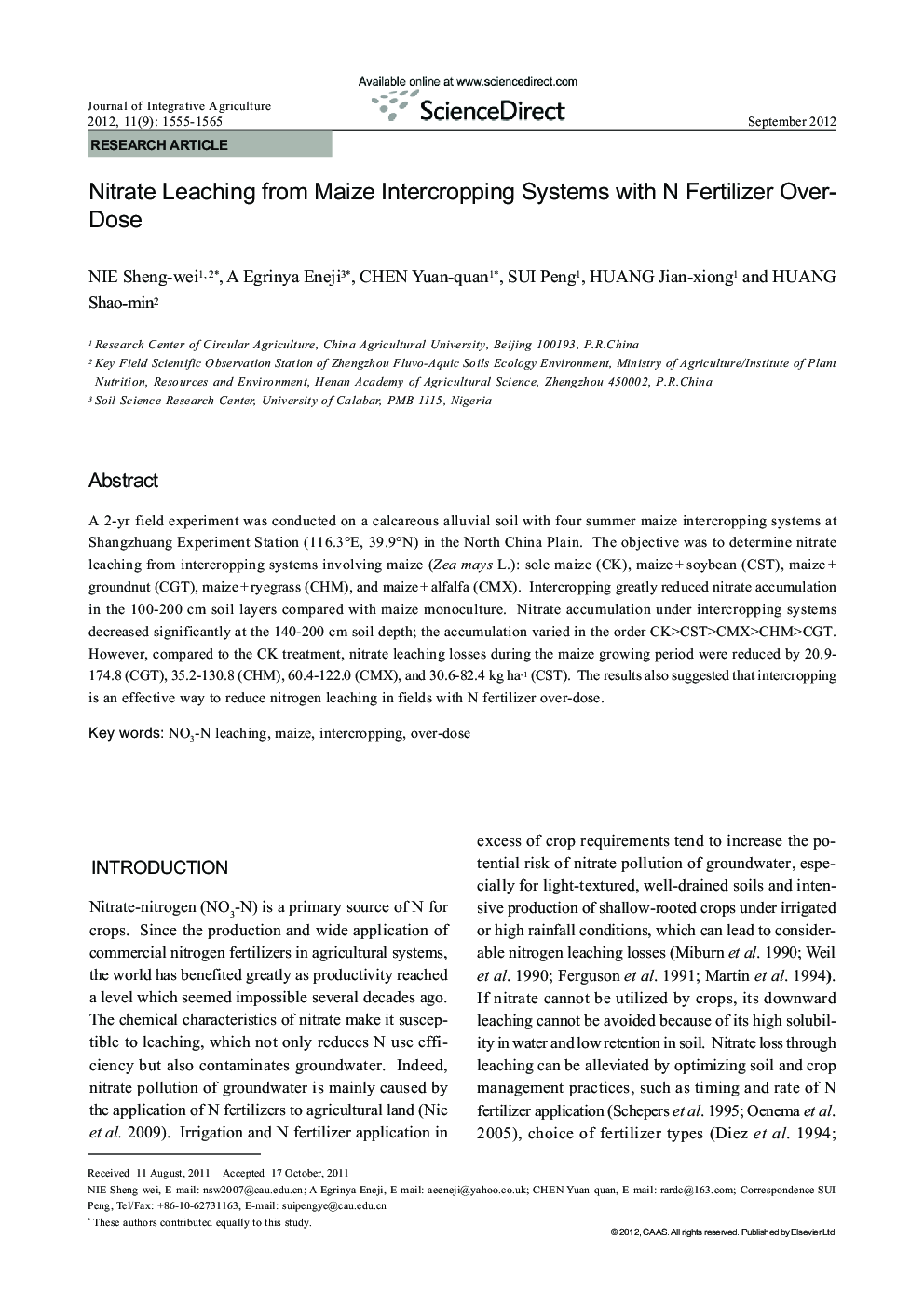| Article ID | Journal | Published Year | Pages | File Type |
|---|---|---|---|---|
| 4495112 | Journal of Integrative Agriculture | 2012 | 11 Pages |
A 2-yr field experiment was conducted on a calcareous alluvial soil with four summer maize intercropping systems at Shangzhuang Experiment Station (116.3°E, 39.9°N) in the North China Plain. The objective was to determine nitrate leaching from intercropping systems involving maize (Zea mays L.): sole maize (CK), maize + soybean (CST), maize + groundnut (CGT), maize + ryegrass (CHM), and maize + alfalfa (CMX). Intercropping greatly reduced nitrate accumulation in the 100-200 cm soil layers compared with maize monoculture. Nitrate accumulation under intercropping systems decreased significantly at the 140-200 cm soil depth; the accumulation varied in the order CK>CST>CMX>CHM>CGT. However, compared to the CK treatment, nitrate leaching losses during the maize growing period were reduced by 20.9-174.8 (CGT), 35.2-130.8 (CHM), 60.4-122.0 (CMX), and 30.6-82.4 kg ha−1 (CST). The results also suggested that intercropping is an effective way to reduce nitrogen leaching in fields with N fertilizer over-dose.
